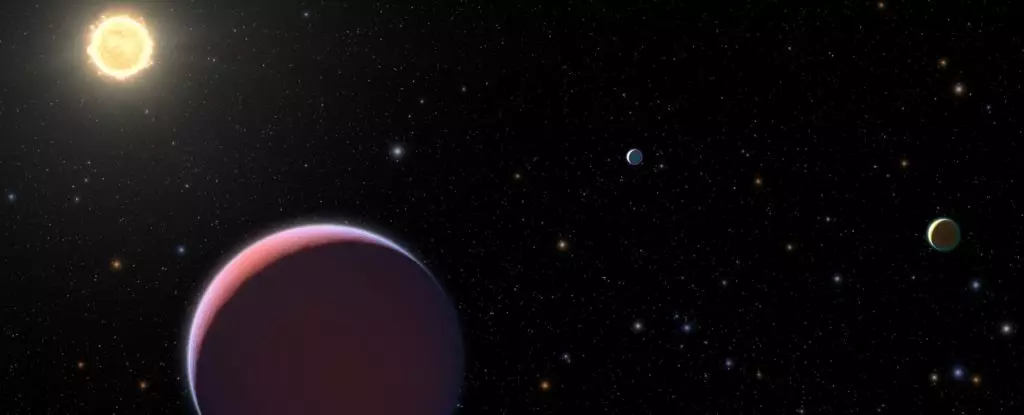Approximately 2,600 light-years away from our Solar System lies a captivating yet anomalous planetary system known as Kepler-51. This system gained prominence in 2012 when astronomers discovered that the yellow dwarf star at its center hosts a collection of peculiar celestial bodies. Each of these three exoplanets possesses remarkably low densities, categorizing them as “super-puff” worlds. This delightful nomenclature hints at their unique characteristics, much lighter than many asteroids in our own vicinity. Recently, astronomers announced the discovery of a fourth exoplanet, igniting a wave of excitement and curiosity within the scientific community.
The classification of super-puff planets is a rare occurrence in the cosmos. As noted by Jessica Libby-Roberts, a planetary scientist at The Pennsylvania State University, systems like Kepler-51, which contain not just one but now four super-puff planets, push the boundaries of our understanding. The challenge lies not merely in the existence of these lighter-than-air worlds, but in comprehending the intricate processes that could allow multiple super-puffs to coexist in a single system. Observations and calculations regarding their formation are thus marked by complexity and intrigue.
Initially, researchers established the nature of the three known exoplanets—designated as Kepler-51b, Kepler-51c, and Kepler-51d—through precise measurements of their radii and masses conducted in 2019. The results were astounding; their densities were measured to be less than 0.1 grams per cubic centimeter, demonstrating the extraordinary lightness and overall composition of these spheres. Such findings lead scientists to question not only their formation but also their potential interactions and stability against each other in a shared gravitational field.
The search for more knowledge about the Kepler-51 system took a surprising turn when astronomers aimed to observe one of the existing planets transiting its star. Regular transit observations typically yield data that illuminate planetary properties based on recognizable dips in stellar brightness. With their models indicating a clear timeline for the transits, the researchers were confident in the predictability of their monitoring efforts. The reality, however, proved more unexpected.
Jessica Libby-Roberts and her team, including Kento Masuda from Osaka University, faced an unanticipated two-hour delay in observing any change in the star’s brightness. Fortunately, their proactive approach helped them record a significant dip in brightness early in the observation period, thus allowing them to conclude that other dynamics were at play in the system. The ensuing scrupulous re-evaluation of transit data revealed a profound disturbance—one that could only be attributed to the gravitational influence of an unnoticed fourth exoplanet.
The newly identified fourth exoplanet, named Kepler-51e, adds another layer of complexity to the Kepler-51 system. This discovery raises intriguing questions about the nature of this celestial body. Although astronomers hypothesize that its mass could be comparable to those of its counterparts, Kepler-51e has not yet been directly observed transiting its star. Consequently, the alignment of its orbit concerning our line of sight remains uncertain, which complicates further calculations regarding its size or density.
While the specifics of Kepler-51e are still largely elusive, Masuda explained that a “brute force” approach led to the identification of potential models that align with existing transit data. This intricate exploration of various models indicates that Kepler-51e likely follows a circular orbit and that it shares the gravitational interplay found in other similar systems.
As scientists delve deeper into understanding the Kepler-51 system, they must confront numerous questions regarding this unusual assembly of super-puff planets. One of the paths forward includes investigating the atmospheric compositions of these planetary entities. By doing so, researchers aim to retrieve clues about their origins and the conditions that facilitated their formation. Such efforts could reveal the broader implications of Kepler-51’s architecture for our knowledge of planetary systems in general.
The extraordinary findings surrounding Kepler-51 have catalyzed a wave of invigorated research, emphasizing the infinite curiosity inherent in astronomy. With each new discovery, we edge closer to demystifying the complexities of our universe and expanding our comprehension of how diverse planetary systems can emerge in the cosmos. The academic journey certainly continues, pushing the boundaries of exploration in search of answers to the myriad wonders nestled in the depths of space.

